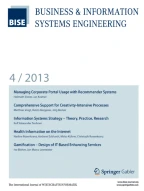References
Biswas-Diener R (ed) (2011) Positive psychology as social change. Springer, Heidelberg
Botella C, Riva G, Gaggioli A, Wiederhold BK, Alcaniz M, Baños RM (2012) The present and future of positive technologies. Cyberpsychol Behav Soc Netw 15:78–84. doi:10.1089/cyber.2011.0140
Calvo RA, Peters D (2014) Positive computing: technology for wellbeing and human potential. The MIT Press, Cambridge
Cooper CL, Liu Y, Tarba SY (2014) Resilience, HRM practices and impact on organizational performance and employee well-being. Int J Hum Res Manag 25(17):2466–2471. doi:10.1080/09585192.2014.926688
Diener E, Wirtz D, Tov W, Kim-Prieto C, Choi D-W, Oishi S, Biswas-Diener R (2009) New measures of well-being: flourishing and positive and negative feelings. Soc Indic Res 39:247–266. doi:10.1007/s11205-009-9493-y
Faust J (2009) Positive design. J Am Soc Inf Sci Technol 60(9):1887–1894. doi:10.1002/asi.21130
Fogg BJ (2002) Persuasive technology: using computers to change what we think and do. Ubiquity 5:89–120. doi:10.1145/764008.763957
Frey BS (2008) Happiness: a revolution in economics. MIT Press Books, Cambridge
Friedewald M, Raabe O (2011) Ubiquitous computing: an overview of technology impacts. Telemat Inform 28(2):55–65
Friedman B, Kahn PH (1992) Human agency and responsible computing: implications for computer system design. J Syst Softw 17(1):7–14. doi:10.1016/0164-1212(92)90075-U
Graesser AC, D’Mello SK, Strain AC (2014) Emotions in advanced learning technologies. In: Pekrun R, Linnenbrink-Garcia L (eds) Handbook of emotions and education. Routledge, London, pp 473–493
Krämer NC, Neubaum G, Eimler SC (2015) A brief history of (social) Cyberspace. In: Hołyst J (ed) Cyberemotions: collective emotions in cyberspace. Springer, Heidelberg
Pavot W, Diener E (2008) The satisfaction with life scale and the emerging construct of life satisfaction. J Posit Psychol 3(2):137–152. doi:10.1080/17439760701756946
Riva G, Banos RM, Botella C, Wiederhold BK, Gaggioli A (2012) Positive technology: using interactive technologies to promote positive functioning. Cyberpsychol Behav Soc Netw 15(2):69–77. doi:10.1089/cyber.2011.0139
Robertson I, Cooper CL (2011) Well-being: productivity and happiness at work. Palgrave Macmillan, London
Rodruigez G (2015) Positive computing: the next big thing in human-centered design? Forbes, 25 Jan 2015. http://www.forbes.com/sites/giovannirodriguez/2015/01/25/positive-computing-the-next-big-thing-in-human-centered-design/. Accessed 25 Aug 2015
Sander T (2011) Positive computing. In: Biswas-Diener R (ed) Positive psychology as social change. Springer, Heidelberg, pp 309–326
Seligman ME, Csikszentmihalyi M (2000) Positive psychology: an introduction. Am Psychol 55(1):5–14. doi:10.1037/0003-066X.55.1.5
Tarafdar M, Gupta A, Turel O (2015) Special issue on ‘dark side of information technology use’: an introduction and a framework for research. Inf Syst J 25(3):161–170. doi:10.1111/isj.12076
Truss C, Shantz A, Soane E, Alfes K, Delbridge R (2013) Employee engagement, organisational performance and individual well-being: exploring the evidence, developing the theory. Int J Hum Res Manag 24(14):2657–2669. doi:10.1080/09585192.2013.798921
Author information
Authors and Affiliations
Corresponding author
Additional information
Accepted after one revision by Prof. Dr. Sinz.
Rights and permissions
About this article
Cite this article
Pawlowski, J.M., Eimler, S.C., Jansen, M. et al. Positive Computing. Bus Inf Syst Eng 57, 405–408 (2015). https://doi.org/10.1007/s12599-015-0406-0
Received:
Accepted:
Published:
Issue Date:
DOI: https://doi.org/10.1007/s12599-015-0406-0
